Top 20 Best Fruit Trees Guide
- Tammy Johnson
- Jul 29, 2024
- 9 min read
Updated: Sep 28, 2024
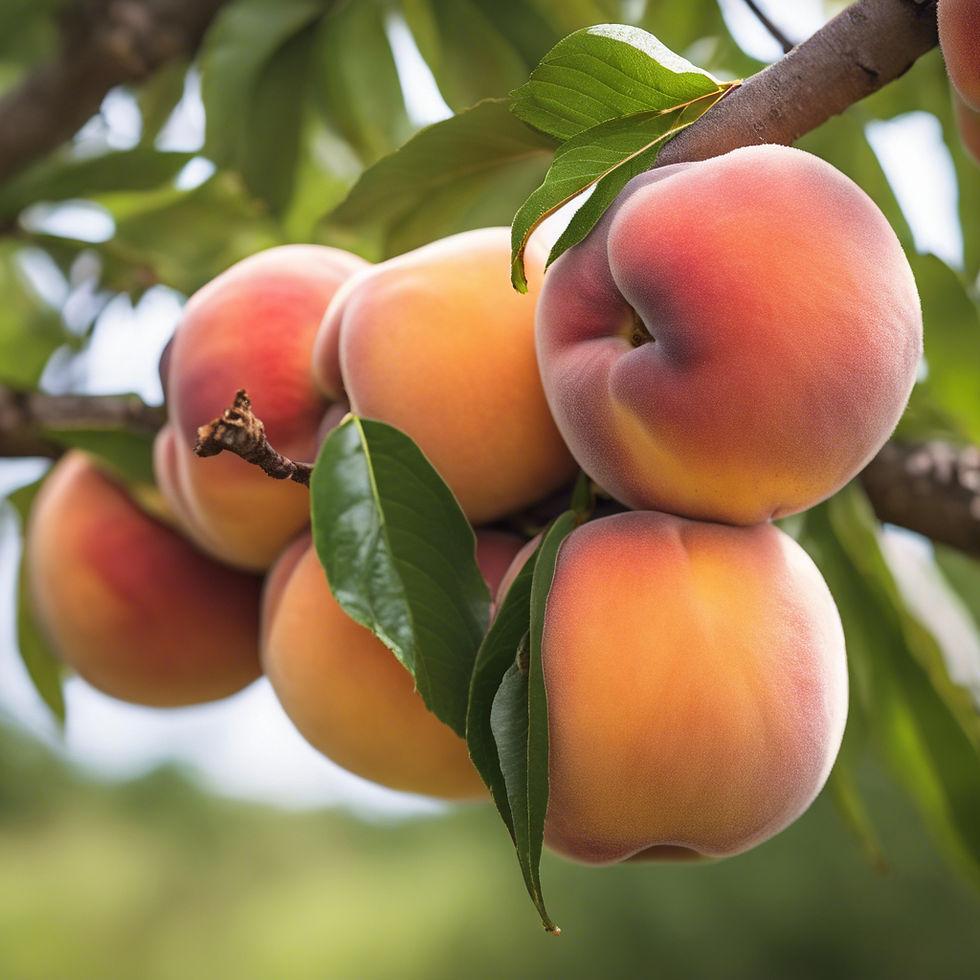
Written and edited by Tammy 29th July 2024
Whether you're beginning with a blank canvas for a new fruit orchard, or you've got space for one or two additional trees to complete your collection, deciding which ones to go with can be a little overwhelming, given the varieties available, and new and improved cultivars constantly coming into the market each season.
To solve that dilemma and make it easier for you I've compiled a list of what I consider to be the top 20 best fruit trees that I've sold, tasted, tended to and seen growing here in our region year after year.
I've included a few details about each one, such as their characteristics, flavour, pollination requirements and ripening times.
So, let's dive in!
Top 20 best fruit trees
Apple-Jonathan

An oldie but a goodie, everyone's favourite, the Jonathan apple. A medium sized, round apple, predominantly red, over a yellow to green background. They're known for their crisp, juicy, sweet, flavour. A good choice for kid's lunchboxes.
Pollination Requirements:
Requires a companion for pollination.
Most suitable: Red Delicious, Golden Delicious, Granny Smith.
Maturity:
Fruit ripens from early to mid-March.
Apple-Granny Smith

Australian bred and world renowned, the 'go to' apple for baking the humble apple pie.
A large firm, crispy green apple, slightly tart in flavour. Granny Smiths are perfect for baking as they hold their shape well.
Pollination Requirements:
Partially self-fertile but benefits from cross-pollination with another apple variety like Red Delicious or Pink Lady.
Universal pollinator for most other apple varieties.
Maturity:
Ripens over a long period from April through into May.
*Granny Smiths are available as a dwarf, commonly known as 'Leprechaun'®️
Apple-Royal Gala

Royal Galas' are another popular smaller to medium apple, perfect size for the kiddies. Crisp, juicy and sweet, they're stripey red over a creamy yellow background.
Pollination Requirements:
Partially self-fertile, they benefit from cross-pollination with a Granny Smith, Pink Lady or Red delicious.
Also available as a dwarf reaching approximately 2.5m tall, branches may require staking while bearing the weight of fruit.
Maturity:
Ripens mid to late February, a good option for extending your harvest season, as it ripens earlier than Jonathan.
Apple-Pink Lady

Pink Lady's, a popular and well-known apple have been right up there amongst the top runners since their release in 1974.
A blushing pinkish-red skin colour over a yellow background, they're a lovely, crisp and juicy apple with a sweet-tart flavour. A good choice if you're looking for an apple that keeps well. Equally as good for cooking as eating fresh.
Pollination Requirements:
They will benefit from a companion such as Gala, Granny Smith or Red Fuji.
Maturity:
Ripens from mid-April through into May.
*A dwarf cultivar of Pink Lady is available, known as 'Pinkabelle'®️.
**Look out for: Red Delicious & Golden Delicious, both classic, well-known varieties having been around for a long time. Both available as dwarfs.
Apricot-Moorpark
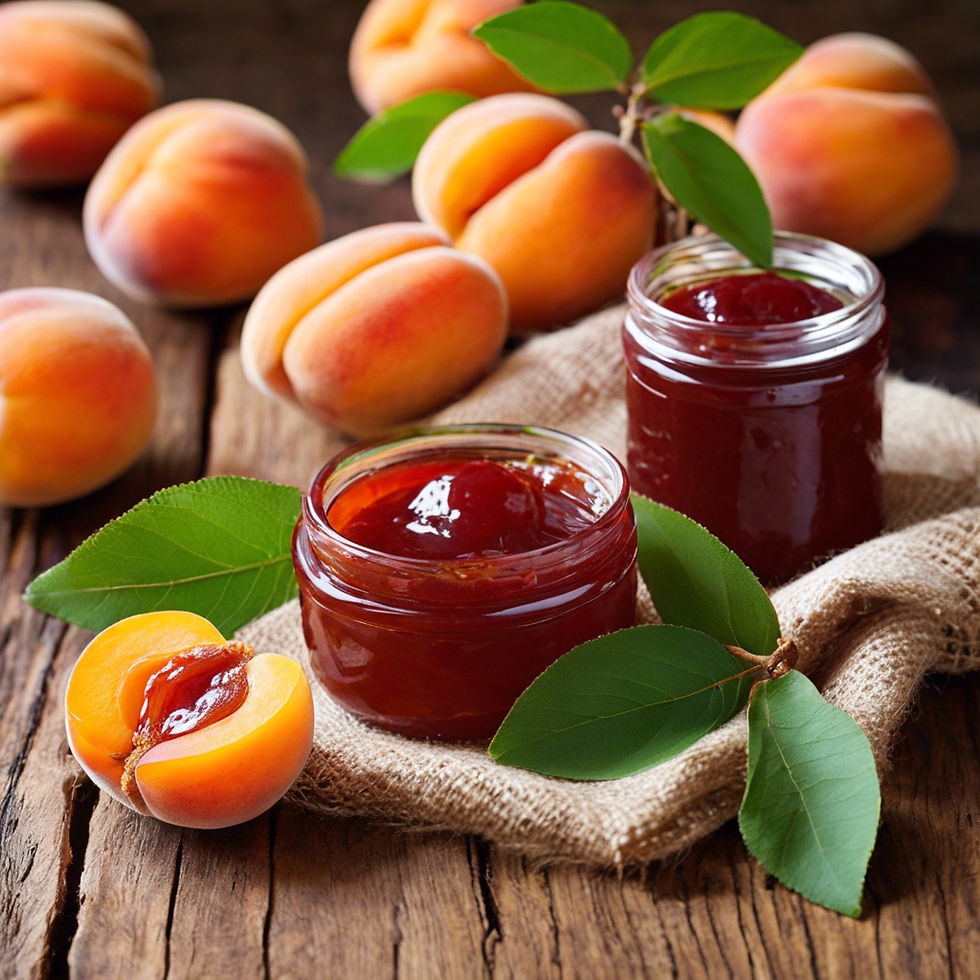
For eating fresh, making jams and dehydrating it doesn't get any better that the classic old favourite Moorpark. When I say old, I mean literally as it's a cultivar that's been around since the 17th century.
Moorpark apricots are best known for their rich, sweet flavour with a hint of tartness.
Pollination Requirements:
They are self-pollinating. Having another apricot tree nearby can increase fruit production, but it's not essential.
Maturity:
Moorpark apricots typically ripen from late December into January.
They prefer a free draining soil and full sun aspect and are also available in a dwarf form.
Apricot-Divinity
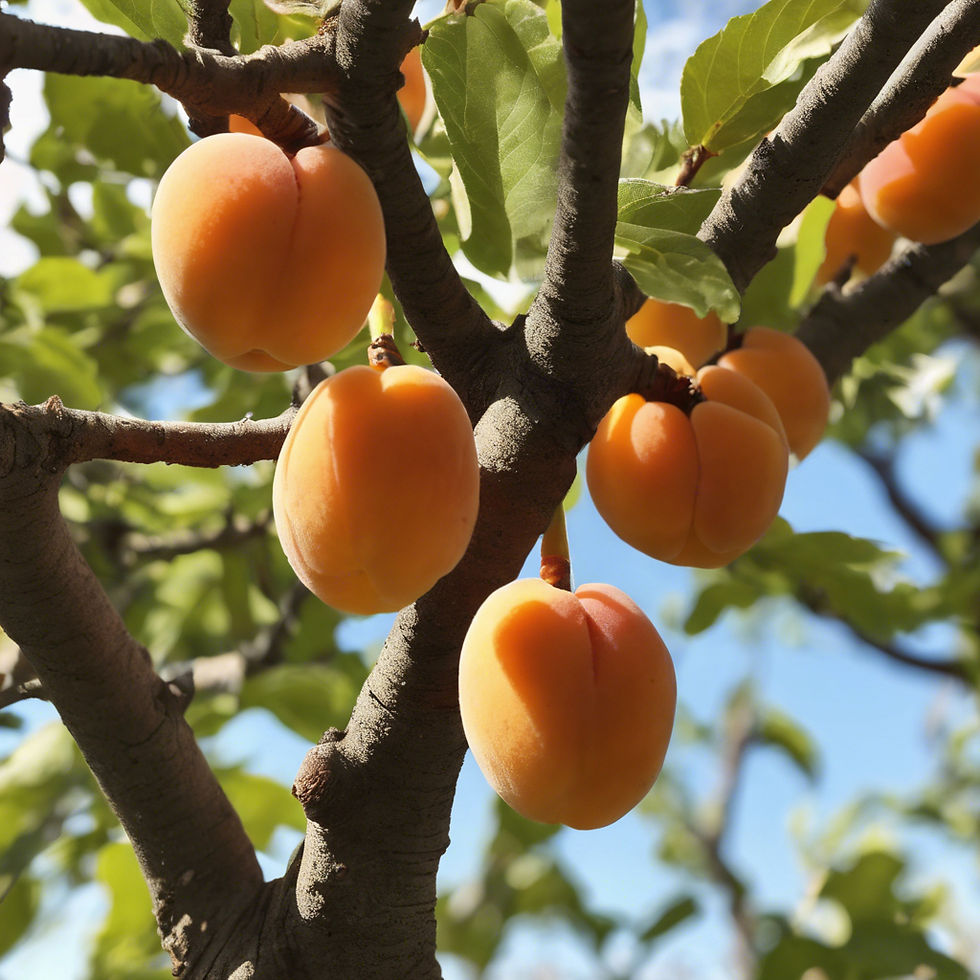
If you're looking for a second variety of apricot to be a companion for your Moorpark, look no further than an Early Divinity.
Early Divinity are a medium to large oblong shaped fruit, with the flavour being every bit as good as the Moorpark.
Pollination Requirements:
Early Divinity apricots are also self-pollinating, but again, having a different variety nearby can increase fruit production.
Maturity:
As the name suggests, Early Divinity ripens almost a month ahead of Moorpark making it a perfect choice for extending your harvest season.
*A dwarf cultivar of Early Divinity is available and happens to be what I purchased myself last season.
Cherry-Stella
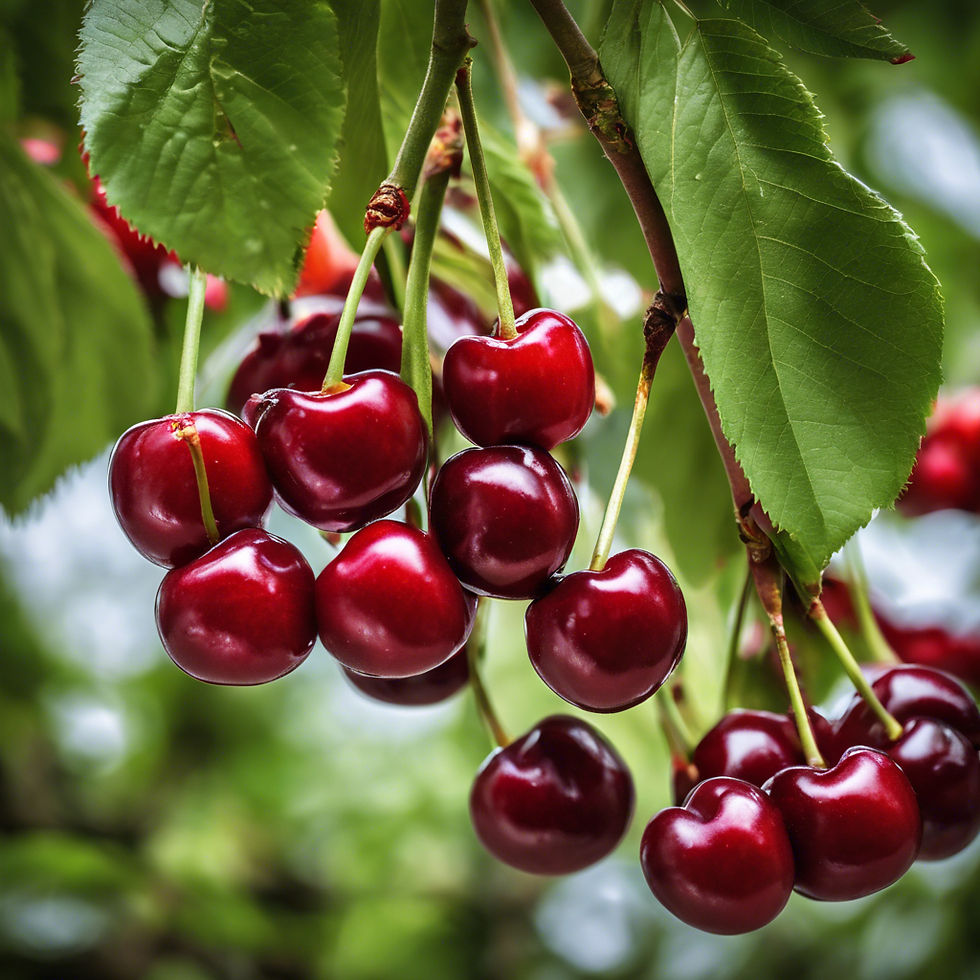
Imagine the pride and satisfaction in being able to pick your own Cherries at Christmas time and not having to pay the exorbitant prices of supermarkets.
Well, a Stella cherry tree is what you need.
Stellas are known for their sweet flavour and dark red to almost black skin.
Needing aprox. 600 chill hours, followed by warm summers for fruit production, our regions climate provides cherries with everything they need to thrive.
Pollination Requirements:
Stella cherries are self-fertile, meaning they don't require a companion tree for pollination, though as previously mentioned, having a second is never a bad thing.
Stellas are also a universal pollinator for most other varieties of cherries.
Maturity:
Stella cherries typically ripen from mid-December.
**A Dwarf cultivar of Stella is also available.
Cherry-Lapins
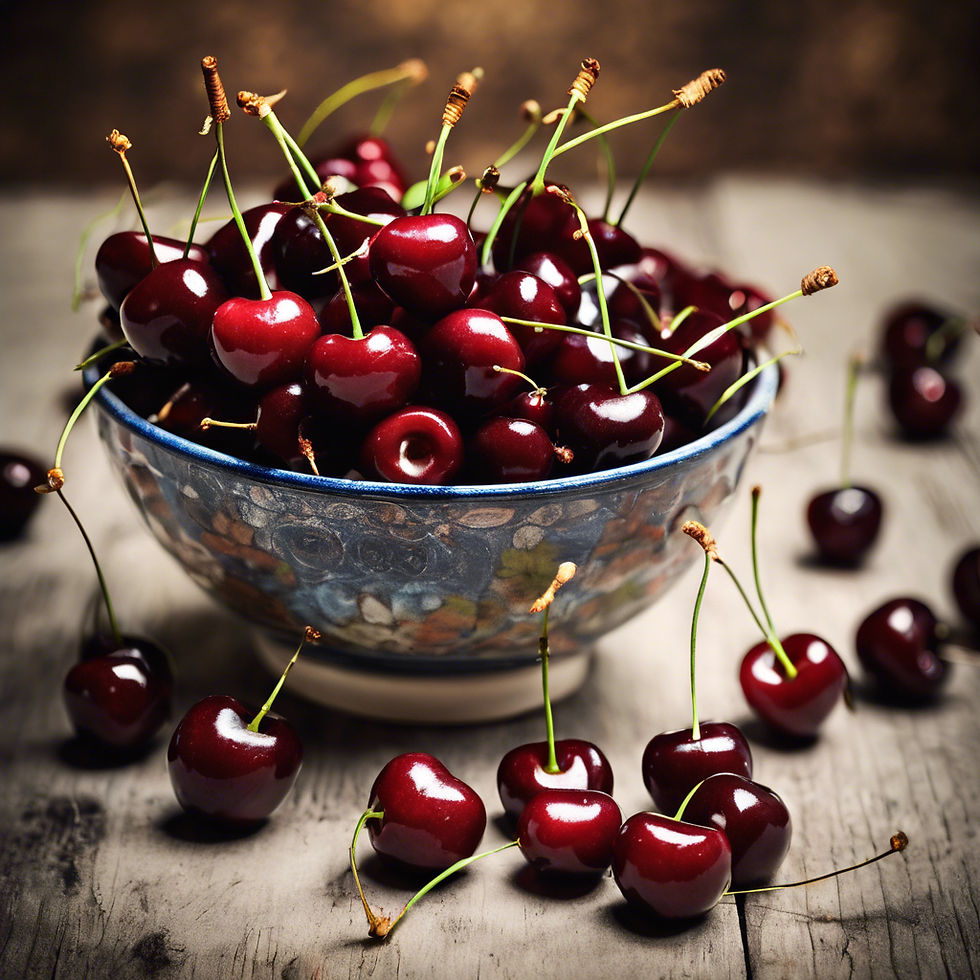
Just as popular and well known here in our region, if you're considering a second cherry tree or an alternative to Stella, look for a Lapins.
Deep red in colour once fully ripe, Lapins are equally as juicy and sweet with hint of tartness.
Pollination Requirements:
As with Stella, Lapins are self-pollinating, so planting two trees is not necessary, but always advantageous.
Maturity:
Lapins Cherries are ready to harvest from late December.
*As with Stella, Lapins is available in dwarf form.
Fig-White Adriatic

My personal favourite, as mine never fails me season after season, the White Adriatic Fig.
White Adriatics are distinguishable by their lime green to pale yellow skin when ripe, with soft pink to dark rose flesh inside.
Renowned for their taste, they have the sweetest, honeylike, melt in your mouth flavour that makes them perfect for eating fresh, or cooking in deserts and preserves.
They grow well here in our region (for anyone else reading this who's further afield, I'm in climate zone 6 a Temperate Mediterranean climate so we have warm dry summers, and our winters are cold and wet).
Pollination Requirements:
White Adriatics, like most figs are self-fertile so you won't need a second one.
Maturity:
My figs begin to ripen in the tail end of Summer, and I continue picking them right throughout the Autumn months.
Fig-Black Genoa
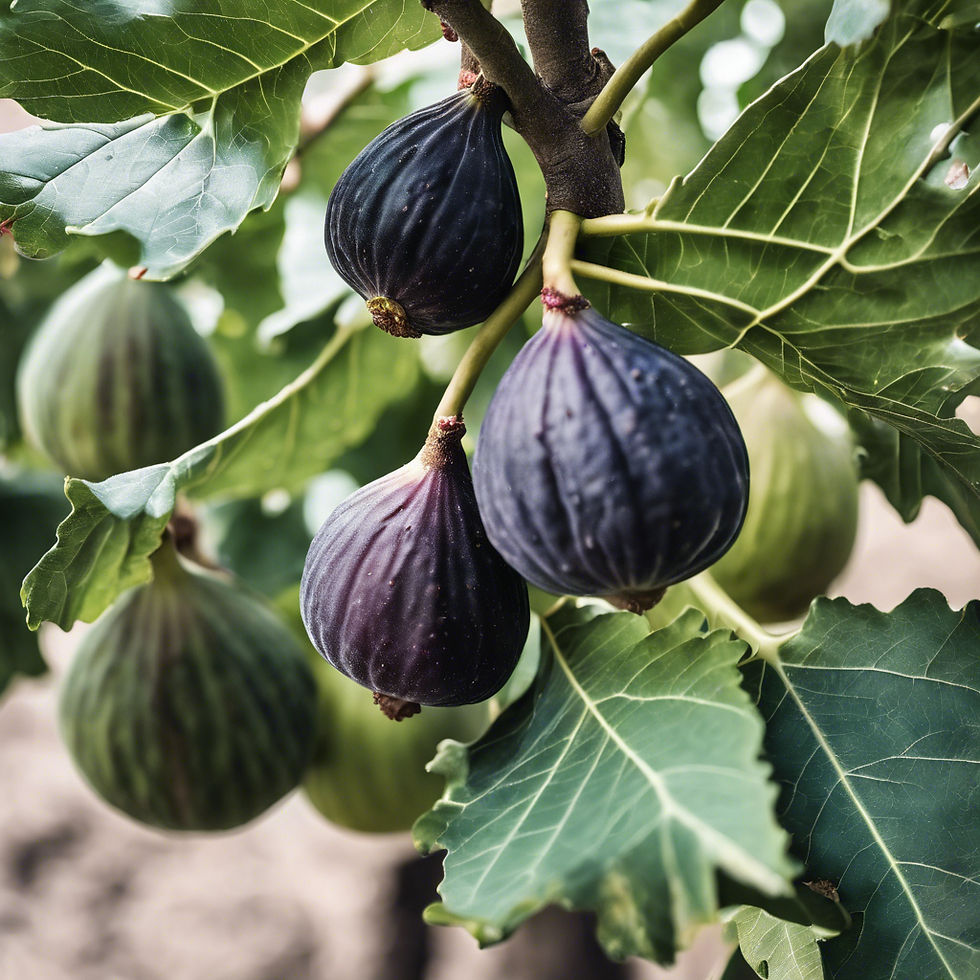
If the idea of a white fig isn't for you, an alternative commonly seen here in our region is the Black Genoa.
Highly prized by fig enthusiasts for their sweet, rich flavour, Black Genoas are a smaller plump looking fig with a vibrant pink to deep red flesh hidden beneath a purple to black outer skin.
Pollination Requirements:
As with the White Adriatics, Black Genoas are self-fertile.
Maturity:
Harvest them from late Summer into Autumn.
**Have you ever wanted to have a go at making your own home-made fig jam?
Try this one... follow the link here to an EASY recipe 👉
Mulberry Dwarf Black
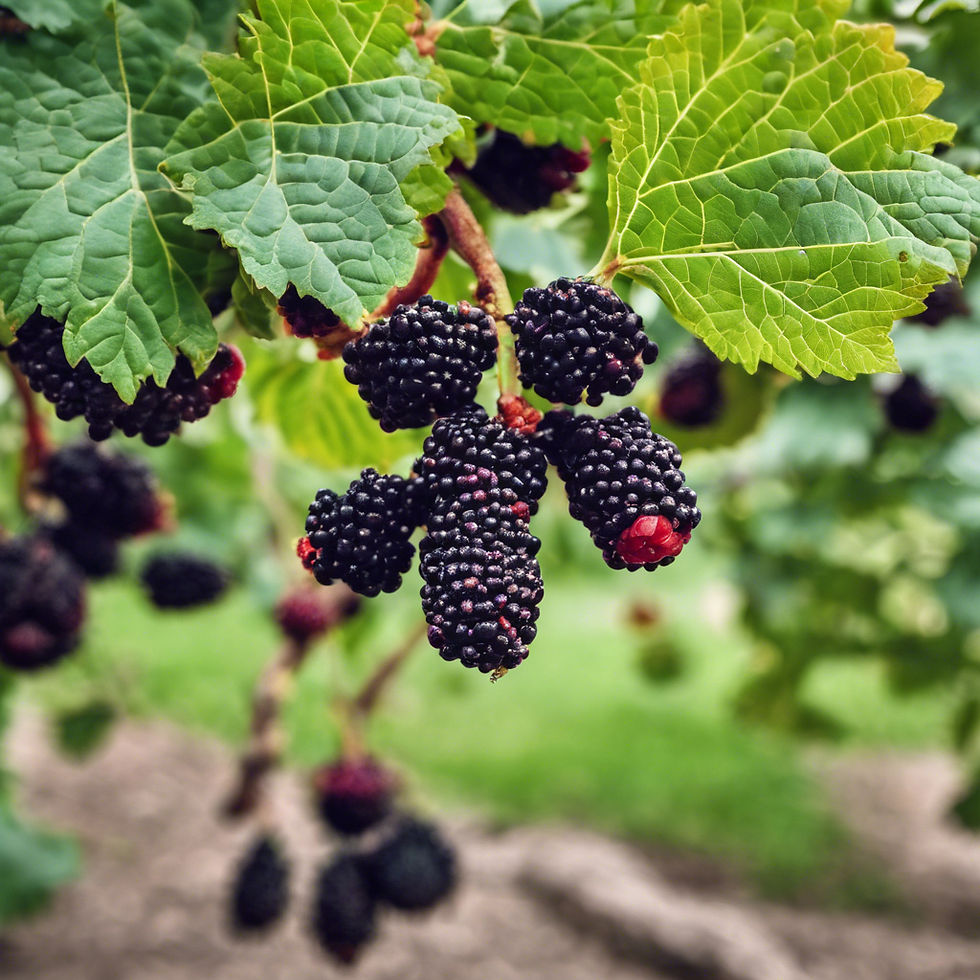
Another favourite of mine that I've never regretted buying is the Dwarf Black Mulberry, you won't get a hardier little tree.
If you don't have acres of room, or years to wait for the heritage Old English Black Mulberry to mature, then this one is for you.
A prolific bearer of sweet, slightly tart, dark red to black berries. The perfect snack to have a handful of daily for weeks on end.
The berries tend to be smaller, firmer and more 'squish resistant' than that of the Old English, that being said they will still make a mess of your hands, clothes and pavers in my case, as my tree in is a large container in my courtyard.
Pollination Requirements:
Dwarf Mulberries are self-fertile.
Maturity:
My tree bears fruits twice a year, the first main crop being in late September, and a second smaller crop in late March to April.
Nectarine-Goldmine
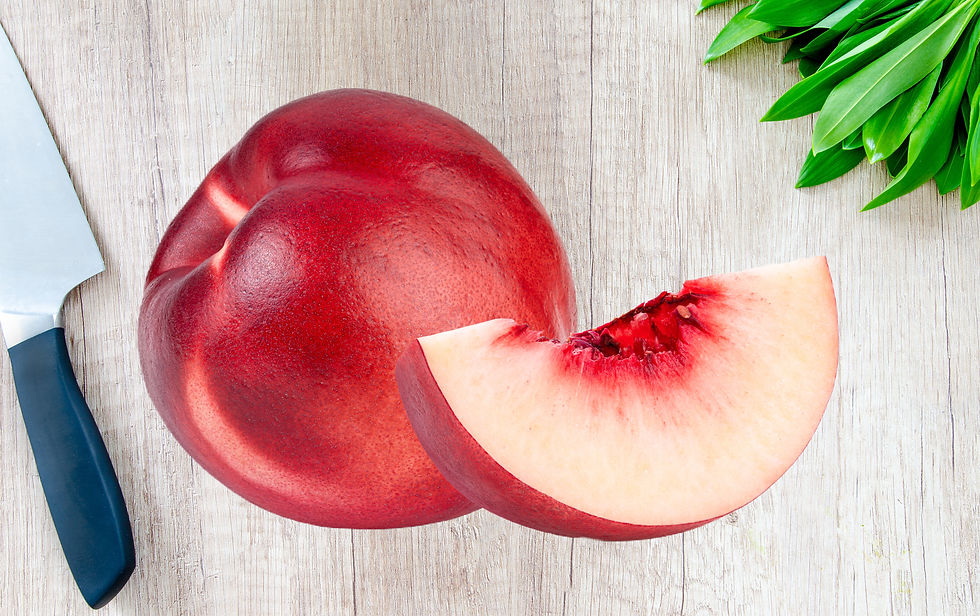
For Nectarines, the hands down favourite would be Goldmine.
Creamy white flesh beneath a smooth, pinkish red skin.
The rich, aromatic flavour sweetens and intensifies as they ripen and soften.
They're 'freestone' meaning you should be able to run a knife around the circumference of the fruit at the dented midline and separate the two halves from the stone.
Pollination Requirements:
Self-pollinating, so you won't require a second one.
Maturity:
Goldmine nectarines ripen mid to late summer, around February.
** Dwarf cultivars are also available.
Peach-Elberta
A fruit orchard just wouldn't be complete without a Peach tree or two and the two most common popular peaches are Elberta and Anzac.
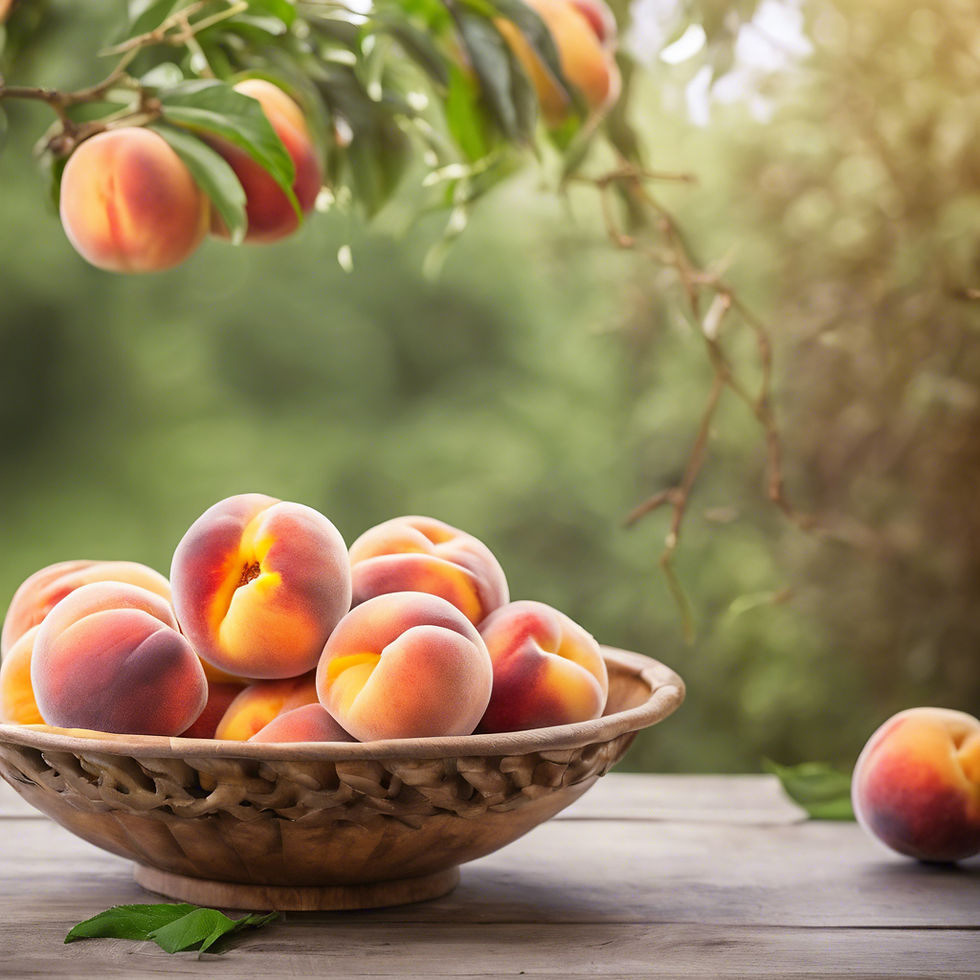
Elberta has been a favourite for years.
A classic sweet juicy freestone peach, with golden orange flesh beneath a soft, fuzzy, red flushed, yellow skin. A beautiful peach for eating fresh or culinary purposes.
Pollination Requirements:
Elberta is self-fertile and will produce fruit without a companion.
Maturity:
Harvest Elberta peaches from mid-February.
** Dwarf cultivar of Elberta is available.
Peach-Anzac
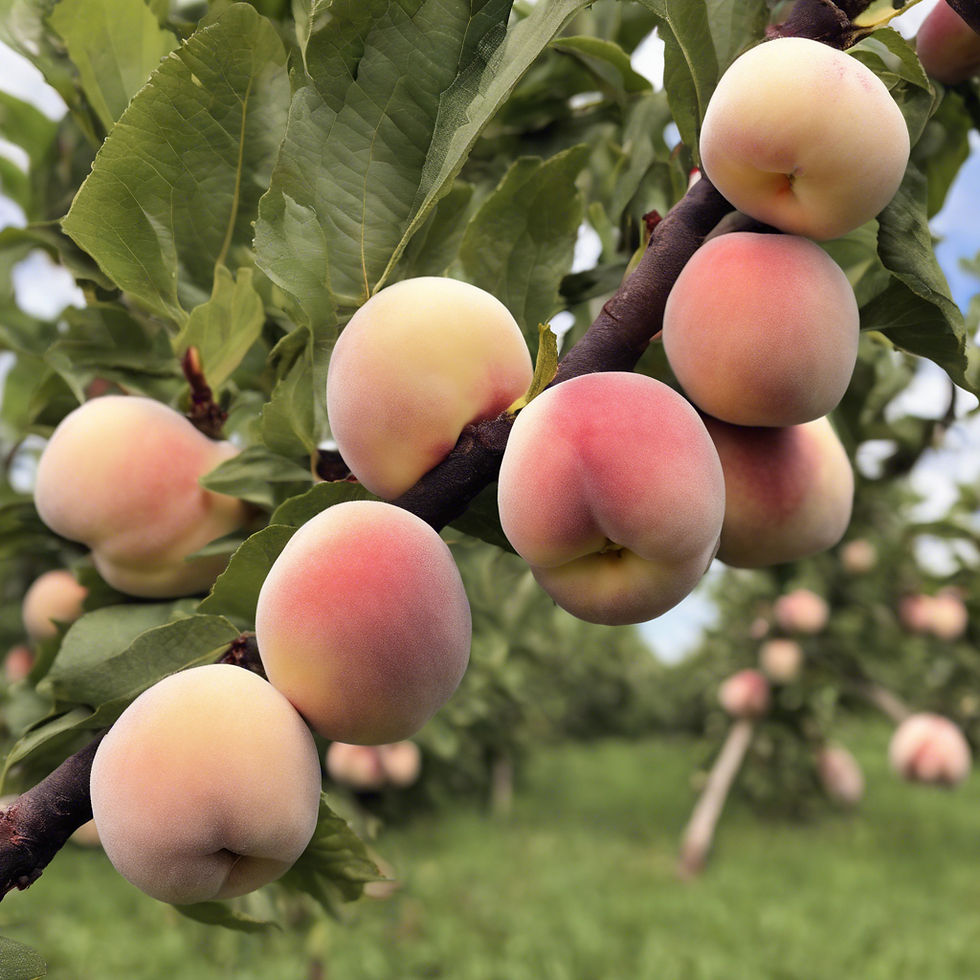
Over 100 years old and named in honour of the ANZAC soldiers, the Anzac Peach is well known and highly regarded as one of the best peaches today.
A large, round, white fleshed, freestone variety with the sweetest flavour.
Anzac having been around for such a long time has a naturally higher resistance to disease, in particular Curl Leaf.
Pollination Requirements:
Anzac peaches are self-pollinating, but having another peach tree nearby can improve fruit production.
Maturity:
Anzac peaches typically ripen in mid to late summer.
*A dwarf cultivar of Anzac is available.
**If you like the idea of an old-fashioned type of Peach where the sweet juice runs down your wrist with each mouthful and the flesh clings to the stone, keep an eye of for Golden Queen.
Still the number 1 peach used for preserved tinned fruit today.
Peacharine
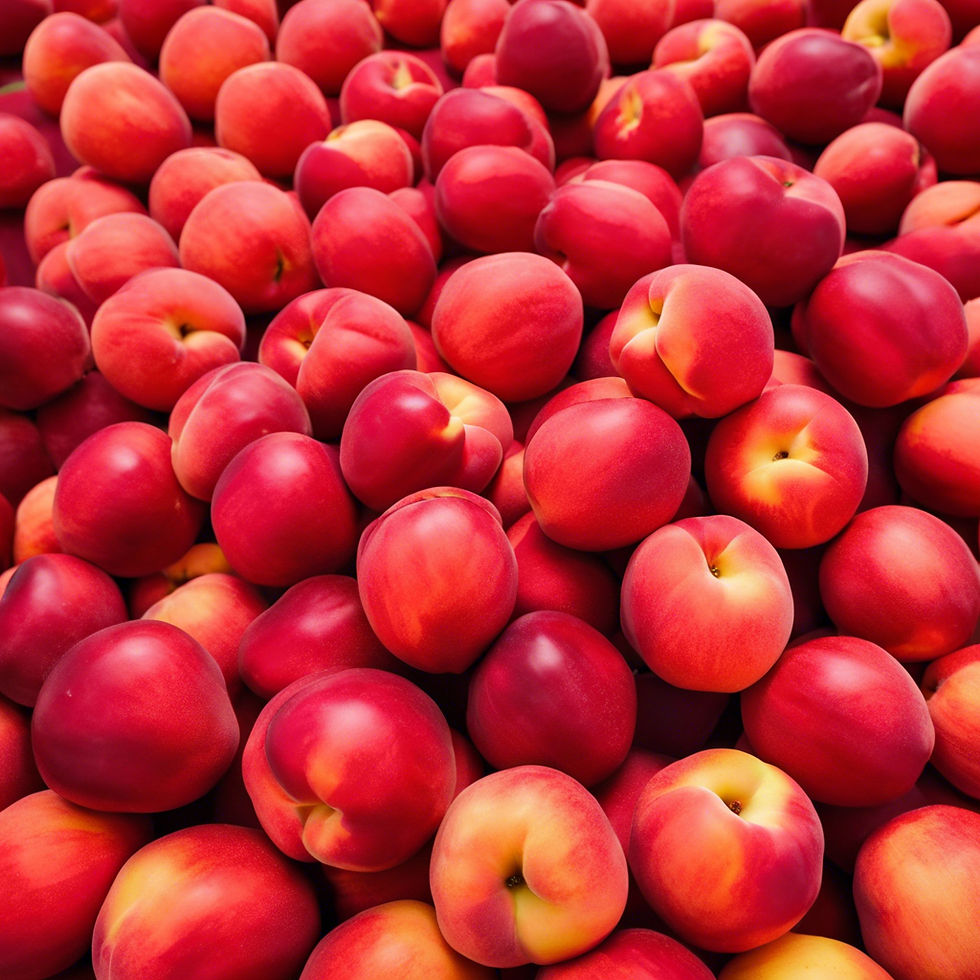
So you love peaches but find the furry skin off-putting or hate the idea of having the remove the fuzz which sometimes doesn't come off easily? Well perhaps a Peacharine is just the thing for you.
A peacharine is basically a cross between a nectarine and a peach, or rather a peach without the fuzz.
Firm, yellow flesh beneath dark pink blushed, smooth skin that becomes sweeter as it ripens.
Freestone.
Pollination Requirements:
Self-fertile as with peaches and nectarines, doesn't require a pollinator.
Maturity:
Expect to be able to harvest then from early to mid-Summer.
Pear-Packham
Accounting for more than 60% of pears grown in Australia today,
the Packham Triumph was bread by Horticulturist Charles Henry Packham in NSW in the late 1890s.
Reliable, prolific fruiters, they're grow well here in our region.
The fruit size is medium to large, oblong but chunky and irregular in shape. The flesh is smooth, and creamy white beneath lime green skin that yellows as it ripens.
Eat them soft sweet and juicy, or whilst still firmer. I love to slice them aprox. 5mm thick and dry them in my dehydrator.
Try to resist eating too many at once though!!!
Pollination Requirements:
Like most pears, Packhams are sterile and will need another pear of a different variety nearby for pollination.
Maturity:
Packhams ripen in late February.
Pear-Dutchess
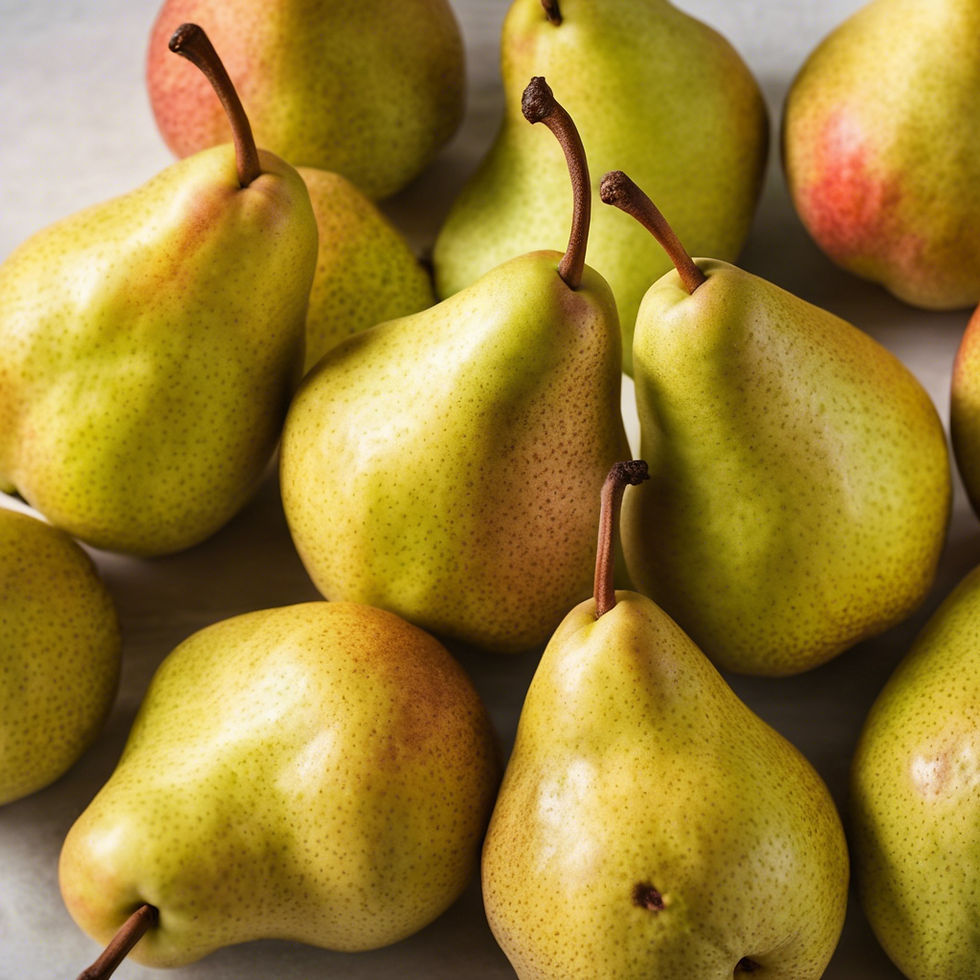
A European variety, also known as Williams or Bartlett, Dutchess are the second most commonly grown Pear in our region.
Slightly smaller and more uniform in their shape and appearance than the Packham, but they're every bit as sweet and juicy.
They're the most popular canning variety of pear.
Pollination Requirements:
Dutchess pears are self-pollinating so perhaps a better choice if you only have room for one.
That being said, fruit yields will be even better with a second variety nearby.
Maturity:
Ripening times for Dutchess Pears are from mid-February.
** Available as a dwarf cultivar.
Pear-Nashi

For something a bit different, you can't go past a Nashi.
Originating in Eastern Asia Nashis' are next level!
A cross between an apple and a pear, Nashis' have the firm, crisp crunch of an apple, with the texture and juiciness of a ripe pear.
The flavour can best be described as florally sweet, with a hint citrus.
Pollination Requirements:
Nashi pears are self-fertile, but cross-pollination from a Dutchess or another Nashi will increase fruit production.
Maturity:
They typically ripen late Summer in February.
Plum-Satsuma
Everybody knows of the Satsuma.
Satsumas are a medium to large freestone plum, with a small pit in the centre.
Dark red flesh beneath, red to almost purple skin, they're best known for their sweet, juicy flavour and the prolific volume of fruit they produce each season.

Pollination Requirements:
Satsuma plums are self-pollinating, so they don't require a companion.
Maturity:
Satsuma plums typically ripen mid to late summer.
**Satsuma plums are available as a dwarf cultivar as well.
Plum-Santa Rosa
Santa Rosa is another popular and well-known variety of plum for home gardens.
A medium sized, round clingstone plum with a soft, sweet, juicy, yellow flesh beneath a deep red coloured skin.

Pollination Requirements:
Santa Rosa plums are semi self-pollinating but will yield better with another plum tree nearby. They're noted to be a good pollen donor for most other plums.
Maturity:
Santa Rosa's ripen December.
** Santa Rosa is available as a dwarf.
Before you go shopping for your new fruit trees there'll be a few things to take into consideration. Maybe create yourself a list.
What type of fruit do you like to eat? What do you find yourself regularly buying in the supermarkets?
Pollination requirements. Some trees will require a companion for pollination.
How much space do you have? How many trees at most can you fit comfortably within the space?
What's your soil quality like? You may need to invest some time and money into improving you soil prior to planting.
Irrigation. Hand watering or setting up drippers on timers for consistency and accuracy of water allocations.
Protecting your fruit from wildlife. A netted fully enclosed orchard or netting the individual trees.
These are the first few that come to my mind and there are quite likely other things that I haven't mentioned that will be a priority to you.
Perhaps spend some time having a look at the Balhannah Nurseries, and Flemings Nurseries websites. The two biggest and longest standing growers and providers of trees to our region. Almost every single retail supplier you visit right now will have Balhannah and Flemings tree in stock. They are amazing companies that we would be lost without.
Take advantage of the friendly staff instore where you buy your trees. Go armed with your list and ask questions. That's what we are there for, and more importantly, what we love to do.
As always, you're more than welcome to send me a message if you want to know more.
Have a wonderful week,
Happy Gardening! 😘🍏🍎





Comments